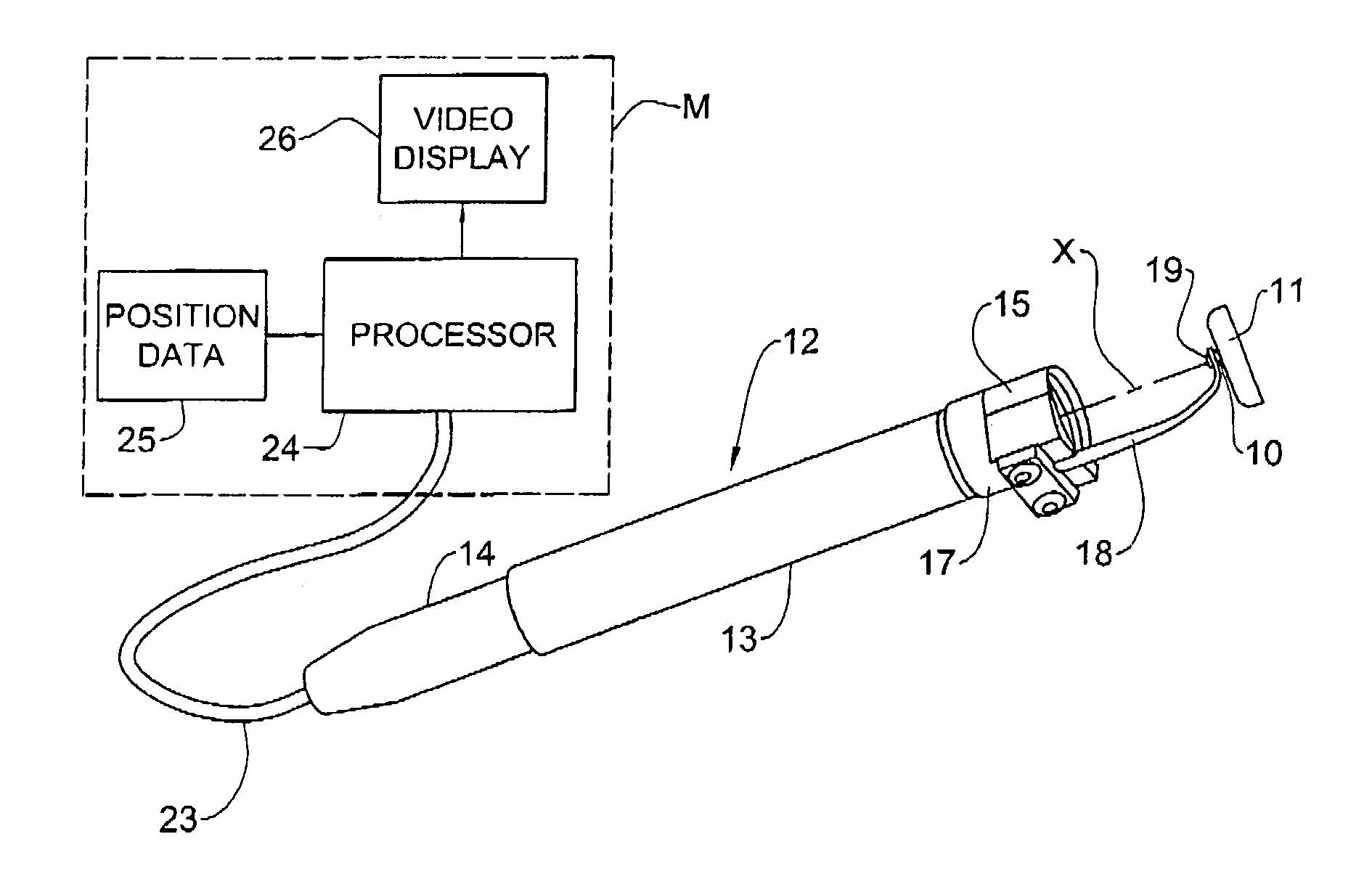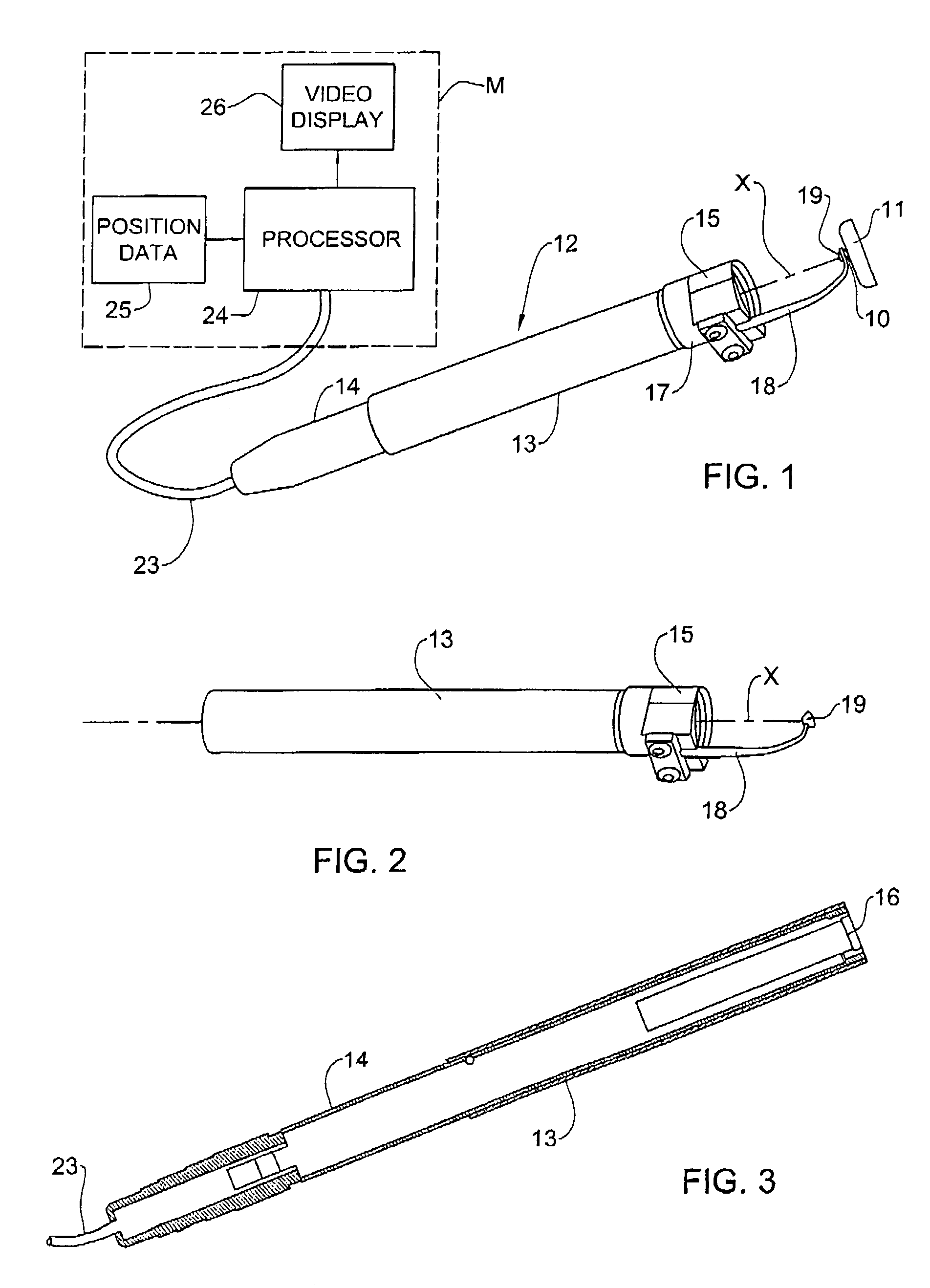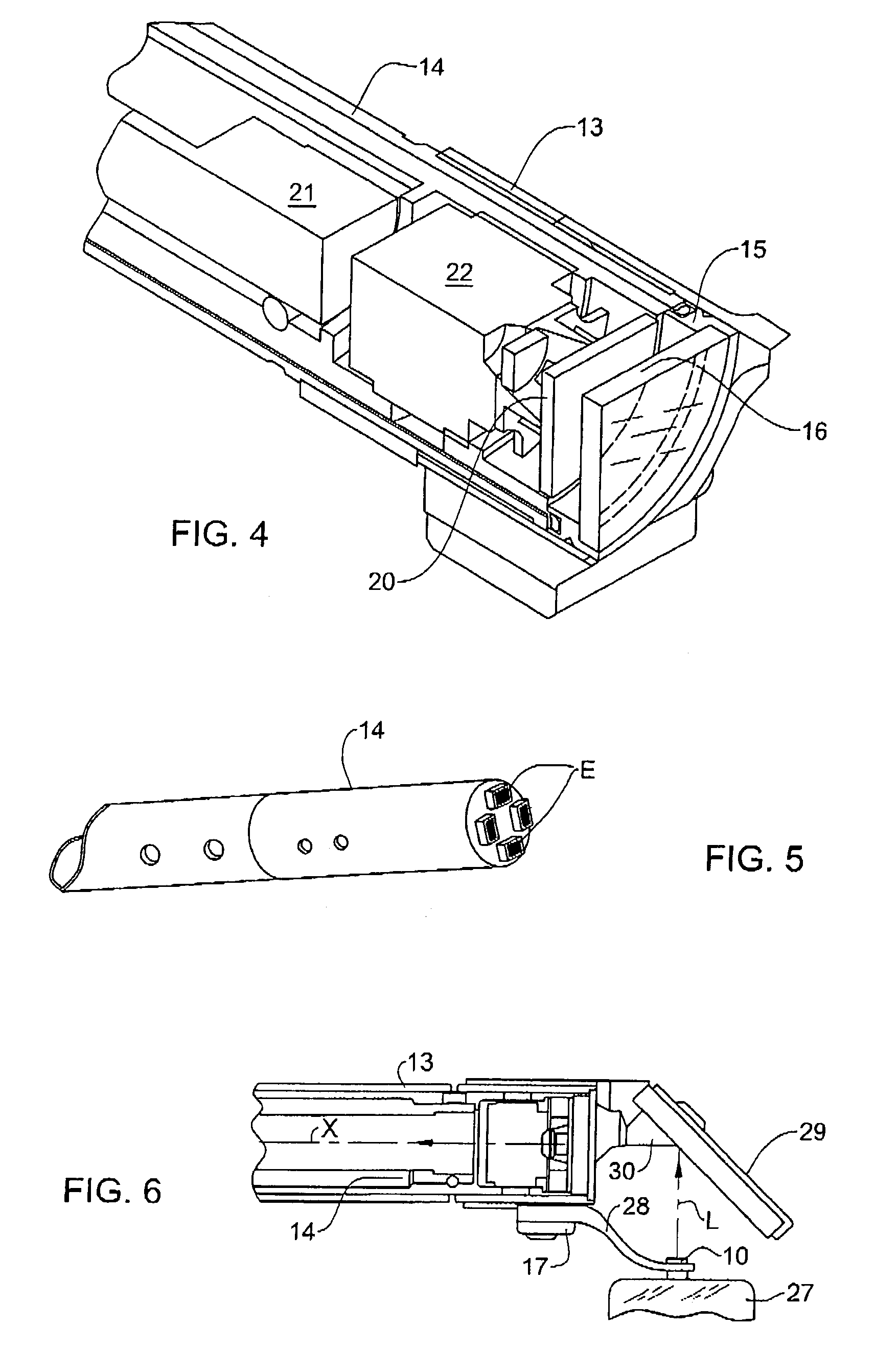Appliance for positioning orthodontic components
a technology for orthodontic components and components, applied in the field of orthodontic components and applications, can solve the problems of human error, manual and as such, in orthodontic procedures, and much effort is made to ensur
- Summary
- Abstract
- Description
- Claims
- Application Information
AI Technical Summary
Benefits of technology
Problems solved by technology
Method used
Image
Examples
Embodiment Construction
[0057]Direct-View Appliance: Shown in FIGS. 1 to 5 is a direct view appliance 12 for positioning an orthodontic bracket 10 or other component on the front face of a tooth 11 so that it occupies a desired site on the surface appropriate to the orthodontics procedure to which a patient is being subjected.
[0058]Appliance 12 serves to hold bracket 10 against the tooth surface and to shift its position thereon to a desired site at which it is then affixed to the tooth surface. It is important therefore that the bracket be exactly placed at the desired site before it is bonded to the tooth surface, for once the bracket is affixed, it cannot be shifted to correct its position.
[0059]Hence the bonding agent must be such as to allow shifting of the bracket until it occupies the desired site. Preferred agents for this purpose are chemical adhesives and light sensitive adhesives which are activated only when exposed to high intensity light or an ultraviolet beam. The bonding agent is normally i...
PUM
 Login to View More
Login to View More Abstract
Description
Claims
Application Information
 Login to View More
Login to View More - R&D
- Intellectual Property
- Life Sciences
- Materials
- Tech Scout
- Unparalleled Data Quality
- Higher Quality Content
- 60% Fewer Hallucinations
Browse by: Latest US Patents, China's latest patents, Technical Efficacy Thesaurus, Application Domain, Technology Topic, Popular Technical Reports.
© 2025 PatSnap. All rights reserved.Legal|Privacy policy|Modern Slavery Act Transparency Statement|Sitemap|About US| Contact US: help@patsnap.com



